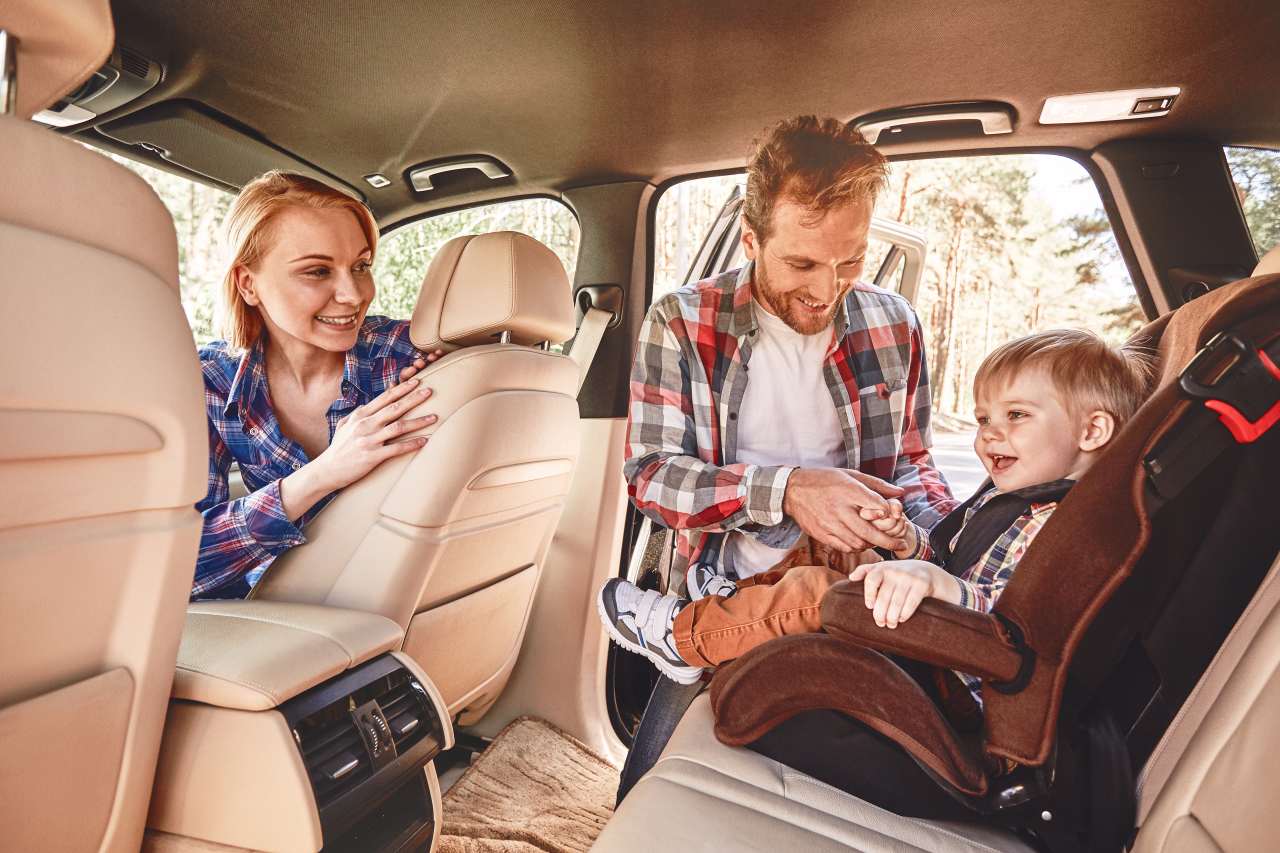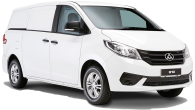Malcolm Flynn is spending three months with his family aboard the Kia Carnival Platinum diesel, to see if the grass is greener on the people mover side of the fence.
Kia Carnival 2020: Platinum
| Engine Type | V6, 3.3L |
|---|---|
| Fuel Type | Unleaded Petrol |
| Fuel Efficiency | 10.8L/100km (combined) |
| Seating | 8 |
| Price From | $31,570 - $38,060 |
| Safety Rating |
|
Part 1: August 9, 2019
Let’s get a few things straight. I love life, I love cars and driving, I love being the age I am and have no serious regrets. I also have no plans for mass procreation, but I did just specifically request to park a Kia Carnival in my driveway for an extended period of time.
Yes, the emergence and booming popularity of the SUV has meant that the traditional people mover is a bit on the nose, but I’ve always felt the current Carnival does a good job of swimming against the tide by doing a stellar job of moving eight people, while still being car-like to drive and amazingly managing to look pretty cool at the same time. Go and have a proper look and drive before roasting me in the comments.
Also backing me up is the fact that the current Carnival has built a bit of a cult following in the CarsGuide office. Everyone who uses one with their family seems to come back raving.
It is the top seller in the mainstream people mover class by a factor of 4:1, but is outsold by its smaller but more fashionably shaped Sorento SUV sibling by 2:1, even though they sit pretty close on price and spec.
If it’s the better tool, why don’t more of us choose it? Kia Australia has kindly offered us three months with the top-spec Carnival Platinum diesel to test the theory.
It’s also the most logical next step in my personal exploration of family cars, building on our time with the Tiguan, Escape, CX-5, CR-V, Golf R wagon, Santa Fe and CX-9 to date.
It’s indeed a bit OTT to ferry around my two toddlers, but with an increasing number of grandparents, aunties and uncles, not to mention little chums lining up to ride along too, I’m confident we’ll put it through its paces.
The Carnival continues to be available in S, Si, SLi and Platinum trim levels, each with a choice of 206kW/336Nm 3.3-litre petrol V6 or 147kW/440Nm 2.2-litre turbo-diesel for an extra $2,500.
One key difference from the Sorento is that there’s no all-wheel drive option for the Carnival, but we’ll let you know if we miss it.
It was last updated in May 2018 after first appearing in February 2015, which brought improved safety features across the range, range-wide Apple CarPlay and Android Auto, a new eight-speed transmission and a bunch of other detail tweaks.
Our Platinum diesel is the first of the MY20 models, which actually doesn’t bring any changes for the 2020 model year, even down to the $62,790 list price.
.jpg)
If you’re really into Carnival trivia, you’ll be interested to know that the most significant change since its 2018 facelift has been the deletion of the portable LED torch from the Platinum’s cargo area.
Importantly, all current Carnivals meet my personal safety requirements with curtain airbag coverage for all three rows, AEB and a maximum five star ANCAP safety rating. The Platinum also adds rear cross-traffic alerts and high-speed blind-spot monitoring. It would be nice to see side airbags covering all three rows, but this is still rare among non-premium branded products.
But the big thing we’re looking to embrace is its bigger size and more practical shape than your typical large SUV.
It’s much more of the latter when it comes to moving from our previos CX-9 though, given it’s just 4cm longer, within 2cm wider and actually slightly lower than the CX-9 if you account for the Carnival’s roof rails.
It’s a different story if you’re shopping between the Carnival and its Sorento sibling though, with the SUV being 32cm shorter, 10cm narrower and 7cm lower, which could make a significant difference when it comes to parking and general manoeuvrability.
.jpg)
I also know Grandma is looking forward to seeing if she can finally sit comfortably between the two child seats on the second row, but this test will have to wait given she’s out of action with a foot operation for the next couple of months.
As with all our long term test cars, the first test is the fitment of these child seats. It’s got the important ISOFIX mounts in the outboard second row positions, and unlike the CX-9, they’re easy to access without being obscured by the seat material.
Like the CX-9 though, I found that the top tether strap for our 0-4 years seat wouldn’t reach the latch on the back of the second row when trying to fit it in rear-facing configuration. Fortunately this coincided with Miss 15 months being big enough to swap around to forward facing, but extension straps are readily availalble for anyone met with the same issue.
Lifting the seats aboard highlighted just how much bigger an opening is created by the sliding rear doors. It may seem trivial, but when you’re reaching through those doors to pick up things off the ground, load heavy objects and generally trying to avoid contact with the perimiter, a bigger opening is always better. And don’t worry, the side windows wind down like any conventional door.
The fact that the top two grades of Carnival feature one-touch power operation for both sides only accentuates this practicality. Hit the key on approach and its open and ready for you. Hit the button on the overhead console, and its ready and open for gransparents who might otherwise be confused by its sliding mechanism. Easy. Mr two-and-a-half also gets a real kick out of what he’s nicknamed “robot doors.”
Another detail all rear occupants really benefit from is the deep tint for all rear windows and retractable sunshades for both back rows (!!!). Your kids will be safe and comfortable from sun glare as much as you’re able to ferry around celebrities unnoticed.
It’s the boot that’s the real revelation though. With the third row folded flat, there’s a sense I could park my Toyota Echo in there. At the very least, the extra height between floor and roof means we can load any of our strollers without collapsing them. Try that in any SUV smaller than a LandCruiser!
.jpg)
Back to back with the CX-9 Azami with its nappa leather and genuine woodgrain, my first impressions are that the materials don’t feel quite as opulent, and it’s not quite as quiet to drive, but it’s so much better than you probably expect for a box on wheels and a world ahead of the commercial-based passenger vans you might have grown up with.
It’s more in line with the Santa Fe we lived with before the CX-9 actually, which should come as no surprise given it shares much of its underpinnings, engine and transmission with the Hyundai’s large SUV from the same parent company. This comparison is therefore also valid for the Sorento with equal component commonality.
One detail that ages the Carnival is the lack of head up display, but there’s still ample digital instrumentation behind the steering wheel.
You might also look for a wireless phone charger, but it would likely rarely get used given the need to connect via USB to access the Android Auto smartphone mirroring (or Apple CarPlay if that’s your preference).
I’m interested to see what difference is extra 200kg of weight over the Santa Fe makes to its real-world fuel consumption. Given our near-10,000 km of experience with the same-engine and transmissioned Hyundai, we’re equipped to tell that story best.
Our Carnival arrived with just 373km showing on the odometer, so I don’t expect its early kilometres to reveal its true potential or go near its 7.6L/100km official combined figure. But, our first 1607km this month of general mixed driving has returned an impressive 8.89L/100km. Not bad considering the Santa Fe’s six month average of 8.48.
Acquired: July 2019
Distance travelled this month: 1607km
Odometer: 1980km
Average fuel consumption for July/Aug: 8.89L/100km (measured at the pump)
Part 2: September 10, 2019
Our second month with the Carnival kicked off with a need to fit a third child seat for one of Mr two-and-a-half’s chums.
You might think that each of the six rear seating positions might be equally ready for such purposes, given the otherwise perfect versatility of the rear layout to date, but not so.
The fact that the second row is split in three with a removable centre section and three-way slide and recline makes it mighty different to incorporate ISOFIX mounts for the centre position. But I was surprised to find that there isn’t even a top-tether mount back there, which means any extra child seat needing more than a seat belt restraint will need to be fitted to the third row.
The surprises continue as you move back to the third row, with the only ISOFIX equipped position being the right-hand position, which is theoretically not as ideal as the left-hand or centre positions and likely a hangover of the Carnival’s US-market design priority. There is a top tether mount in this position, along with the centre position, but no child seat mounting capability in the left hand position. So if you need to carry child seats that need mounting with anything other than a seatbelt, you’re only going to be able to fit four at best.
So for our need to fit a third 0-4 child seat with ISOFIX, it was time to take advantage of the handy removable second row centre seat, which is even on wheels to make it easy to cart around. This enables access from the second row with child seats mounted in the two outward second row positions, which can also be slid fore an aft to leave the right amout of room around all child seats.
.jpg)
This layout also came in handy after we were done with our borrowed toddler when one of the aunties came to visit for the weekend, as she could sit back there with ample room and zero risk of inadvertently disturbing a sleeping toddler. In fact, there’s such an abundance of boot space left in this configuration, we haven’t thought to lower the third row seat again.
Back on the campaign trail for sliding doors to be fitted to all vehicles, another benefit became apparent during a visit to the tightly stacked carpark at swimming lessons. When they open, they extend no further than about 20cm from the side of the car. In other words, they’re brilliant for access in tight parking situations and you have absolutely zero chance of accidentally whacking another car with your door.
.jpg)
Two months and nearly 4000km into our time with the Carnival Platinum; and two things are becoming increasingly apparent:
- The lovely Deep Chroma Blue paint needs regular and careful cleaning to avoid it being confused with yet another skungy four-year old Carnival family hauler, so we highly recommend one of the lighter colours considering how much of it there is to wash.
- The average fuel consumption is looking remarkably consistent, and really quite impressive for such a big bus.
Acquired: July 2019
Distance travelled this month: 2157km
Odometer: 4137km
Average fuel consumption for Aug/Sept: 8.96L/100km (measured at the pump)
Part 3: November 26, 2019
Our final month with the Carnival brought its strongest endorsement yet, with the surprise purchase of an eight-seat dining set that needed to be collected.
With eight chairs and a 190x103cm table, you’d probably think a ute or truck rental might be required, but a quick whip of the measuring tape suggested the Carnival would be up for the job.
With the second row centre seat removed, the remaining outboard seats slid forward and the third row dropped, I managed to fit the whole lot with ease. And given I didn’t have to remove the two child seats, I could have easily still carried the kids and therefore my whole family!!
On that note, the great “room between two child seats” test I’ve applied to all our long term test cars shows an extra 5cm over the CX-9, which is enough to make it marginally more comfortable rather than just “oh, yeah, you can fit.” Nonetheless, we found it more useful to remove the centre seat most of the time and use the gap to walk through to the third row. Incidentally, this centre second row seat stores easily on wheels.
.jpg)
Other little details we’ve grown to love include the second-row climate control buttons which are mounted to the ceiling behind the driver’s side B-pillar, and therefore well out of reach of fiddling fingers.
I also love the conversation mirror for keeping tabs on what’s happening in the back, in addition to cup and bottle holders galore, and a good array of USB and power points.
Another cool side effect of the Carnival’s low floor is that it makes for a huge tailgate that does a great job as an awning for changing nappies or if you just need a bit of shelter from the sun or rain.
.jpg)
The second most significant moment for the Carnival was when we decided to go to the park when Grandma, Aunty and Uncle were visiting. It’s fair to expect that two cars would be needed to transport what effectively represents two families, plus scooters, helmets and the pram, but not when you have a Carnival at your disposal.
With Mum, Aunty and Uncle on the back row, kids in their usual possies and Grandma up front, all reported decent comfort levels, and we still could have fit another adult between the two child seats!
All this practicality hasn’t been lost on my kids either, with Mr two-and-a-half insisting on referring to the Carnival as “my van.”
This point was further rammed home when a visiting adult asked him about a special car (one with prancing horse badges) we had on the driveway at the time, and rather than boast about the Italian exotic, Mr two-and-a-half proudly exclaimed “We’ve got a van!”
Driven back to back with our previous CX-9 Azami LE with its nappa leather and genuine woodgrain, the $6000 cheaper Carnival Platinum isn’t quite as opulent, and it’s not quite as quiet to drive.
But it is so much better than you probably expect for a box on wheels, and a world ahead of the commercial-based passenger vans you might have grown up with.
It is a big, wide car, but there’s good driver visibility, and tight parking situations are made so much easier by the 360 degree camera system.
Another big plus is that Kia’s seven-year warranty with capped price servicing and roadside assistance is still the industry benchmark.
Tallied up and averaged over our 5617km with the Carnival Platinum, our overall average fuel consumption of 8.9L/100km was a way off the official combined figure of 7.6L/100km. But, I’m still very happy given it’s less than half a litre more than we experienced with the Santa Fe, which has the same engine and transmission and weighs 200kg less.
The big 80-litre fuel tank was also pretty handy for cutting back our refills to just under 900km between drinks, and that's around town!
The only other cons are pretty minimal. There’s no heads up display or wireless car charger, which is fair to expect in a new car costing more than $60,000, and it’s a bit of a shame to see such a big car with so much room still equipped with a space saver spare wheel.
But, we’ve gotten pretty used to the Carnival being ready for pretty much any situation we throw at it. If you can tear yourself away from the SUV obsession, life is pretty good on this side of the fence. I have a feeling we're going to miss it.
Acquired: July 2019
Distance travelled this month: 1853km
Odometer: 5990km
Average fuel consumption for Sept/Oct: 8.86L/100km (measured at the pump)
Pricing Guides

Range and Specs
| Vehicle | Specs | Price* |
|---|---|---|
| Platinum | 2.2L, Diesel, 8 SPEED AUTOMATIC | $33,220 - $39,600 |
| S | 2.2L, Diesel, 8 SPEED AUTOMATIC | $25,410 - $31,350 |
| Si | 2.2L, Diesel, 8 SPEED AUTOMATIC | $29,260 - $35,200 |







.jpg)
.jpg)
.jpg)
.jpg)
.jpg)
.jpg)





.jpg)




.jpg)
